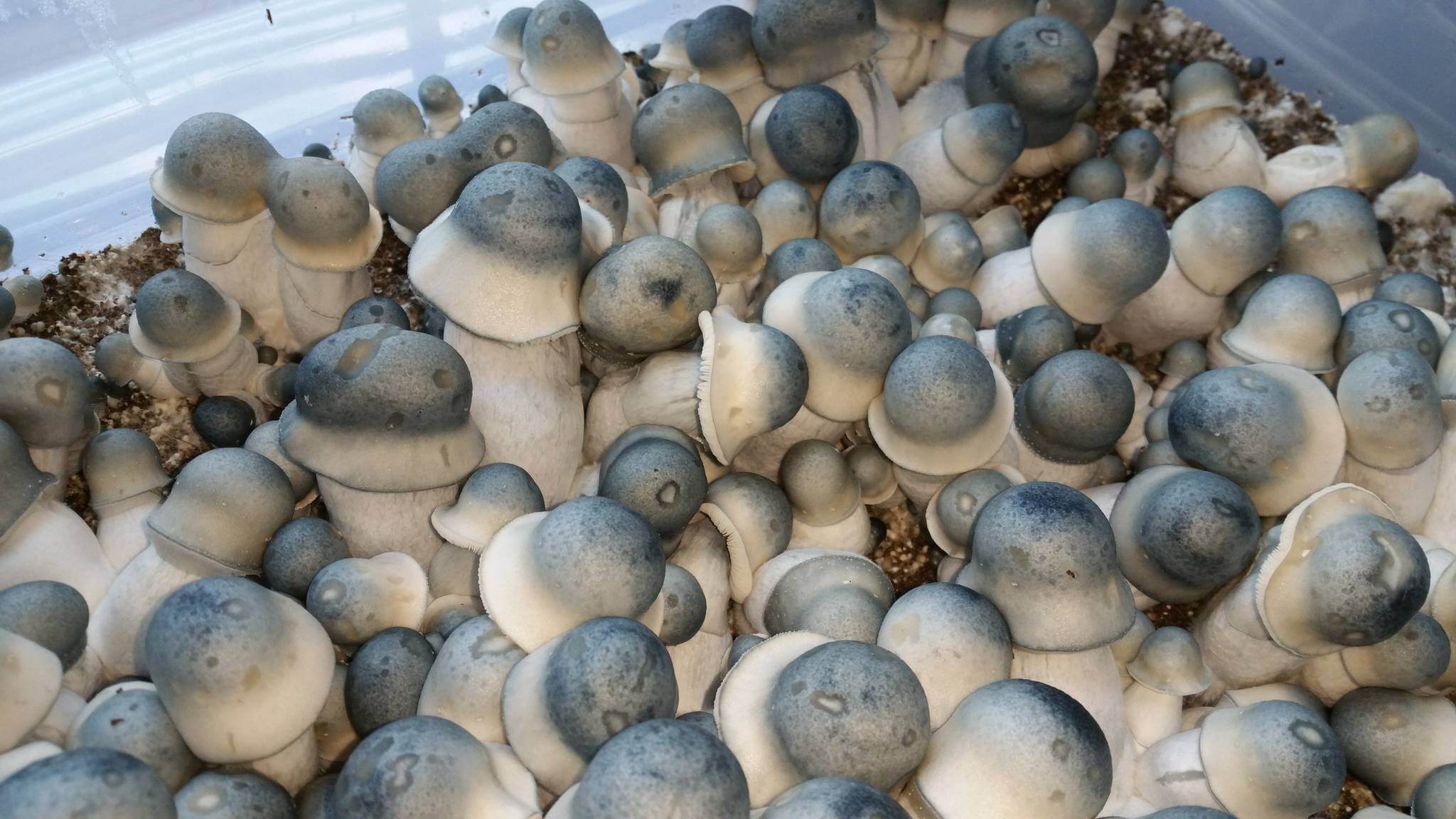The Albino Penis Envy (APE) mushroom is a rare and exceptional strain of Psilocybe cubensis, celebrated for its pale, ghostly appearance and unmatched potency. A product of genetic refinement, APE is believed to have originated from a cross between the legendary Penis Envy (PE) strain and an albino variety of Psilocybe cubensis. This strain represents a fusion of aesthetic appeal, scientific intrigue, and mycological challenge, making it a favorite among researchers, cultivators, and enthusiasts alike.
A Historical Perspective: Terence McKenna and the Origins of Penis Envy
The history of Penis Envy mushrooms, from which Albino Penis Envy derives, is closely tied to the work of ethnobotanist and psychonaut Terence McKenna. McKenna was instrumental in popularizing the study of psilocybin mushrooms in Western culture during the 1970s and 1980s. His exploration of ancient plant medicines, combined with his philosophical and scientific insights, inspired a wave of interest in mycology.
The original Penis Envy strain was reportedly discovered in the Amazon rainforest and brought to the West with the help of McKenna and his collaborators. It is believed that McKenna played a pivotal role in isolating and refining the genetics of this potent strain. The result was a mushroom with unique characteristics: thick stems, bulbous caps, and significantly higher psilocybin content than other Psilocybe cubensis strains. Over time, further experimentation led to the creation of Albino Penis Envy, a leucistic variation with a striking lack of pigmentation.
Terence McKenna’s influence extends far beyond the discovery of this strain. His advocacy for psilocybin mushrooms as tools for self-exploration and healing has cemented his legacy in the world of mycology, making him a central figure in the history of Albino Penis Envy and other extraordinary strains.
Unique Features of the Albino Penis Envy Mushroom
- Leucistic Appearance:
- APE mushrooms exhibit a lack of pigmentation, giving them their distinctive white-to-bluish hue. Unlike true albino mushrooms, which completely lack color, APE is leucistic, meaning it retains faint pigmentation that becomes apparent in specific conditions.
- This ethereal appearance makes APE one of the most visually striking strains in the Psilocybe cubensis family.
- Compact Morphology:
- The mushrooms feature thick, meaty stems and small, dense caps.
- Unlike most strains, APE caps often remain underdeveloped and do not fully open, resulting in a compact, rounded appearance that sets them apart from other varieties.
- High Psilocybin Content:
- APE is known for its extreme potency, containing significantly higher levels of psilocybin and psilocin compared to standard Psilocybe cubensis strains.
- This heightened concentration contributes to its reputation for producing intense, long-lasting psychedelic effects, including vivid visuals, profound introspection, and spiritual experiences.
Cultivation Process
Growing Albino Penis Envy mushrooms is an art in itself, requiring attention to detail and precise environmental controls. Their slower growth rate and unique morphology make them a challenge even for experienced cultivators.
Growth Stages
- Spore Inoculation:
- APE mushrooms are often cultivated using isolated spore syringes. Due to their genetic variability, starting with high-quality spores is essential for successful growth.
- Unlike some strains, APE spores may take slightly longer to germinate, so patience is key.
- Mycelium Colonization:
- The mycelium spreads across the substrate more slowly than in other Psilocybe cubensis strains. This stage requires consistent temperature and humidity to support robust colonization.
- Look for thick, rhizomorphic (rope-like) mycelium as an indicator of healthy growth.
- Fruiting Conditions:
- Once the substrate is fully colonized, introduce fruiting conditions by lowering CO₂ levels, maintaining high humidity (85–90%), and providing indirect light.
- APE mushrooms tend to fruit in dense clusters with smaller yields compared to faster-growing strains, but the potency of the mushrooms compensates for the lower volume.
Environmental Management
- Humidity:
Maintain high humidity levels (85–90%) throughout the fruiting process to prevent the mushrooms from drying out or stalling in growth. Use a hygrometer to monitor levels consistently. - Temperature:
Keep the temperature stable between 21–24°C (70–75°F). Fluctuations outside this range can stress the mycelium and slow fruiting. - Light Exposure:
Provide minimal, indirect light for about 12 hours a day to signal the transition from mycelium to fruiting. Direct light can cause overheating or drying.
Harvesting Albino Penis Envy Mushrooms
Harvesting APE mushrooms requires precision and care to preserve their structural integrity and potency.
Timing the Harvest
- Structural Maturity:
Harvest when the mushrooms are fully formed but before the caps begin to open significantly. This timing ensures peak potency and preserves their compact, dense structure. - Color Indicators:
The pale coloration of APE intensifies slightly as the mushrooms mature, providing a visual cue for harvest readiness.
Step-by-Step Harvesting
- Preparation:
- Wear sterile gloves and use sanitized tools to avoid contamination.
- Prepare airtight containers for immediate storage.
- Cutting:
- Carefully slice the mushrooms at the base of the stem using a sharp, sterile knife or scalpel. Avoid damaging the surrounding mycelium to promote subsequent flushes.
- Storage:
- Place the freshly harvested mushrooms in airtight containers in a cool, dark environment. For long-term preservation, drying the mushrooms and vacuum-sealing them with desiccants is recommended.
Conclusion
The Albino Penis Envy mushroom is not just a strain of Psilocybe cubensis; it is a testament to the artistry and innovation within the field of mycology. With its origins tied to Terence McKenna’s groundbreaking work, this strain combines historical significance, scientific intrigue, and unparalleled potency. For those willing to embrace its challenges, cultivating APE offers rich rewards in the form of unique insights, profound experiences, and a deeper appreciation for the wonders of fungal biology.



